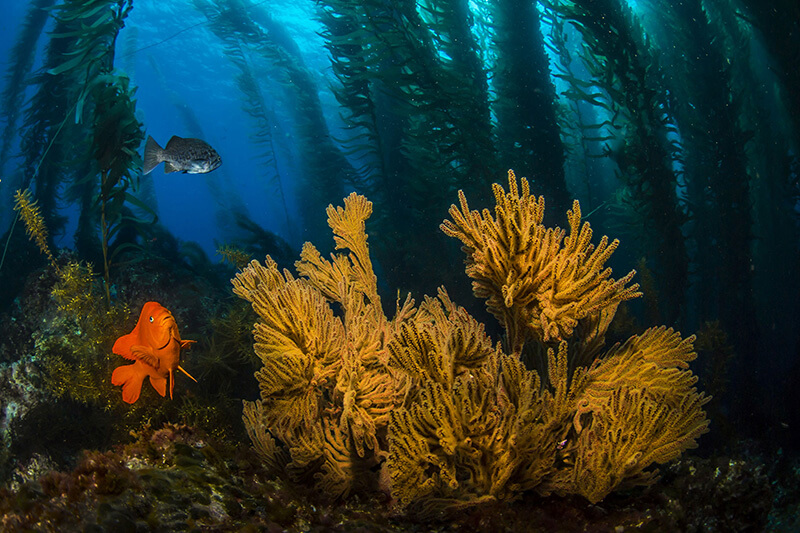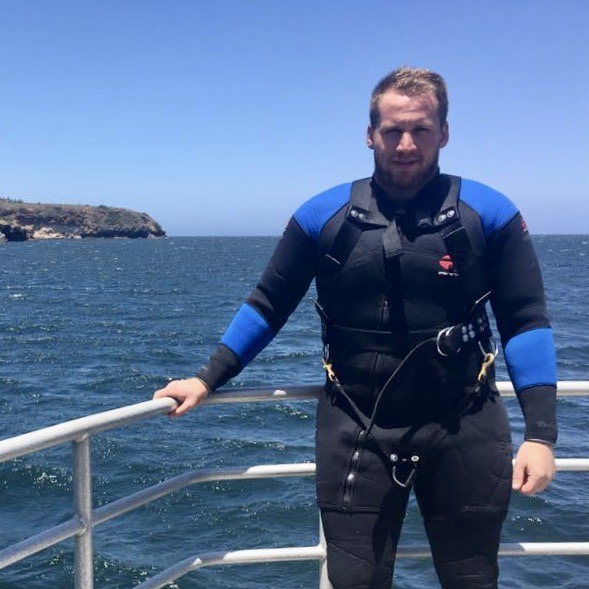
No Refuge from the Heat


Over the past several decades, marine protected areas (MPAs) have emerged as a favored conservation tool. By protecting marine species and safeguarding habitat, these reserves help buffer ecosystems against natural and human-made shocks alike.
Researchers at UC Santa Barbara and the National Oceanic and Atmospheric Administration (NOAA) sought to determine how well MPAs protect fish from changes caused by marine heatwaves. These stressful events can drastically alter an ecosystem, and scientists predict they will increase in frequency and intensity as the climate warms.
To answer these questions, the team took advantage of a marine heatwave that affected the entire West Coast between 2014 and 2016, using 16 years of data from the Channel Islands. The archipelago lies at the transition between subtropical ecosystems in the south and temperate ecosystems north of Point Conception, and is dotted with a network of a dozen or so no-take reserves.
According to the researchers’ findings, published in the journal Scientific Reports, MPAs do little to mediate some effects of marine heatwaves, including, in this case, changes to fish community structure. Resource managers will have to employ other strategies if they want to mitigate this challenge, the research shows.
No-take marine protected areas are extremely useful strategies for marine conservation. Because they are a whole-ecosystem management tool, many scientists believe they can help mitigate climate shifts. Prior research has shown that MPAs can increase species’ numbers, stabilize ecosystems and even increase fishery catches – all effects that should, in theory, offer protection against climate change.
“There have been many studies showing that MPAs are effective at preserving biodiversity and facilitating recovery of single species during and after extreme temperature events,” said lead author Ryan Freedman, a former doctoral student in the lab of Jennifer Caselle, a researcher at UCSB’s Marine Science Institute. “Given these aspects, and the body of work on MPA benefits, a lot of resource managers point to MPAs as a way to mitigate climate effects even though there have been just a few studies on the topic.”
Fortunately, Freedman and his team had a wealth of data from around the Channel Islands thanks to PISCO, the Partnership for Interdisciplinary Studies of Coastal Oceans. The academic consortium conducts research on California’s coastal ocean to inform management and policy. PISCO has datasets stretching back to 1999, as well as monitoring sites inside and outside the islands’ MPAs.
Freedman made use of a marine heatwave that affected the region in 2014 as a sort of natural experiment. He compared fish density, biomass, biodiversity and the recruitment of juveniles between warm-water and cold-water species to investigate how the marine protected areas mediated the impact of the heatwave.
“We found that the heatwave had an outsized effect on density, recruitment and biodiversity compared to typical oceanographic events like El Niño,” Freedman said. “Once we saw that, we focused on data just during the heatwave years to look closely at the trends inside and outside MPAs.”
The team asked if fish communities inside the reserves remained similar before, during and after the heatwave in comparison to unprotected locations. Instead, they found little difference in the way that fish communities shifted inside and outside the MPAs.
The researchers were surprised by the results, but have formulated a possible explanation. They suspect that trends were similar within and without the MPAs because the heatwave tended to affect non-fished species — like rock wrasses and Garibaldi — more than those targeted by fisheries. For non-targeted species, the additional protection of a no-take marine reserve is a moot distinction when it comes to marine heatwaves.
“We suspect [non-]targeted species are more responsive because they are usually smaller and have shorter life histories than targeted species,” Freedman explained. As a result, non-fished species likely feel a stronger impact from acute events like marine heatwaves. Additionally, non-targeted species are generally more abundant, which means there are more individuals for a heatwave to effect.
The implications of these findings seem pretty clear to Freedman. “Because MPAs alone can't mitigate acute ecosystem change during heatwaves, resource managers will need to use a suite of conservation options to maintain important ecosystem services in the Santa Barbara Channel and beyond as heatwaves become more common,” he said.
This study also highlights the close partnership between UC Santa Barbara and the NOAA Channel Islands National Marine Sanctuary, where Freedman was employed during his Ph.D. and where he is now a research ecologist.
“Strong partnerships between academic researchers and resource managers are critical to solving some of the most difficult environmental challenges,” said Caselle. “Having the office of the Channel Islands National Marine Sanctuary physically located on our campus is a huge benefit to researchers working on applied problems and managers looking for scientific solutions.”
This is the first in a series of papers that aims to identify some of the ways an altered climate will impact the future of kelp forests in Southern and Central California. The team recently submitted another manuscript outlining how they classified warm-water and cold-water species in the hopes that other conservation groups can use their methodology to improve the accuracy their own work. The final paper in the series forecasts future changes in fish species under different climate scenarios for the Santa Barbara Channel, with a goal of allowing for proactive management in the face of climate change.



